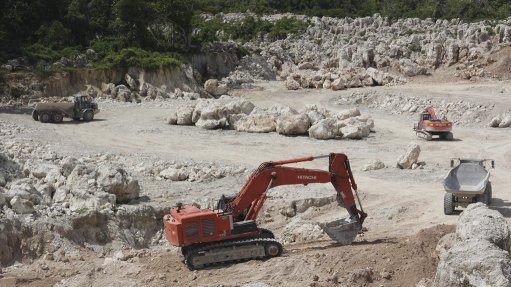
SERIOUS CONCERN AMD may place ‘undue stress’ upon the country’s economy and water-strained environment, potentially undermining both the agricultural and industrial sectors
The formation of acid mine drainage (AMD) is currently one of the biggest environmental problems facing the South African gold mining industry, warns local State-owned mineral and metallurgical innovation company Mintek senior scientist Veruska Govender.
She points out that mining operations have played an integral part in the development of the South African economic and political landscape. However, Govender highlights that, while mining may have brought wealth to some, it also caused extensive ecological damage.
“This can be observed by the release of acidic water into the country's already stressed water supplies in the Witwatersrand gold mining regions, the City of Johannesburg and surrounding areas,” she says.
Moreover, Govender comments that AMD may place “undue stress” on the country’s economy and water-strained environment, potentially undermining both the agricultural and industrial sectors in the Gauteng region.
She says that knowledge of the mineralogical characteristics of gold ore tailings samples and the changes occurring over time is “extremely important” to assist in the prediction of contamination potential and the environmental management of the tailings dams.
Govender elaborates that, as AMD is primarily a function of the mineralogy of the rock material, the potential for AMD formation is highly variable from site to site and, thus, predicting AMD is currently a difficult and costly exercise.
She proposes the use of automated mineralogical analyses of gold ore tailings samples, in conjunction with environmental and chemical tests, as these “show great potential” for assisting in predictive protocol measures for AMD in the South African gold mining industry.
Govender notes that mineralogical analyses, chemical analyses and static tests have recently been conducted on gold ore tailings samples from five different gold mines in the Witwatersrand region.
Chemical analysis of each sample and two basic environmental tests, acid-base accounting (ABA) and net acid generation (NAG) were conducted. The ABA test indicated how much acid the sample could potentially generate at complete sulphur oxidation (theoretical acid generation) and how much acid the sample could neutralise. The NAG test determined how much acid was generated by the sample of actual acid generation.
Govender states that a mineralogical approach can be used to evaluate the extent of the reaction of the acid-forming and acid-neutralising minerals (ANC) under various acid rock drainage (ARD) characterisation test conditions. Many studies have indicated that the ANC depends on the mineralogy of the surrounding rock.
She notes previous studies have suggested that there is an opportunity to use mineralogy at all stages of ARD characterisation and prediction to allow for more reliable and effective mitigation measures. Representative portions of each sample were screened into five size fractions and mounted into polished sections for analysis by quantitative evaluation of minerals through scanning electron microscopy, which is commonly known as Qemscan.
Pyrite is the main sulphide-bearing mineral and acid-forming mineral in each gold ore sample, followed by lower to trace amounts of chalcopyrite (potentially acid-forming), pyrrhotite (acid-forming), and arsenopyrite (potentially acid-forming). Acid-consuming minerals identified in each sample comprised calcite, dolomite and ankerite.